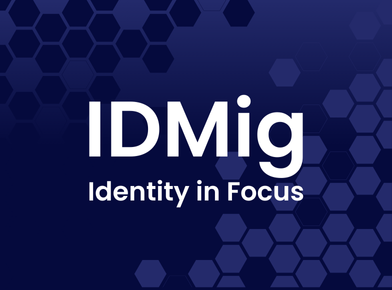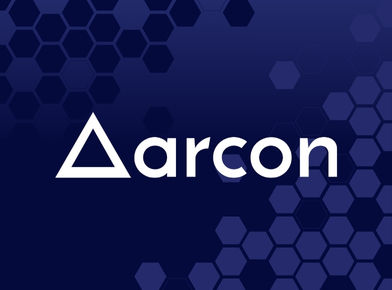As they approach the second half of 2024, identity governance managers must reevaluate their priorities to ensure their security posture keeps pace with how their businesses are evolving. In The State of Identity Governance 2024 report, Omada surveyed IT professionals and business leaders from 567 enterprises with more than 1,000 employees to ascertain their ability to mitigate identity-related security threats. The report uncovered specific drivers that should help to inform every organization’s identity governance management strategy now and in the future. Here are three key trends derived from the report data.
- The identity-related risk landscape is growing. Organizations must evaluate and deploy more effective measures to overcome new threats.
The number of identity-related security breaches has increased dramatically in the second half of 2023 and the start of 2024. Some estimates suggest that in up to 80 percent of these breaches, the attackers used stolen and/or compromised credentials to gain access to the organizations they targeted. This trend is expected to continue, and attacks will become more sophisticated over time. The State of Identity Governance 2024 revealed an ongoing trend of more employees and known third parties like partners, consultants, contractors, and temporary help working remotely than before COVID. This takes physical security practices out of the organization and puts them into the hands of individuals, increasing the risk of breaches. Beyond this, there are many other ways for hackers to compromise accounts and gain unauthorized access as well, such as orchestrated social engineering attacks. Security professionals must recognize these trends for the risks they are and take decisive action to manage them effectively.
The capabilities of modern Identity Governance and Administration (IGA) provide strong foundational security. Business leaders and IT professionals using modern IGA claim to have extreme confidence in their security hygiene practices; 95 percent agree their organization uses strong identity verification, 93 percent say they can quickly identify anomalous behavior and shut down suspect accounts, 94 percent say they can easily meet new business requirements, and 91 percent say they can easily produce regulation-specific reports.
While good security hygiene is fundamental, it is not sufficient as a single approach. Organizations must adopt an identity-first security posture as a bulwark against more sophisticated attacks. Security frameworks like Zero Trust start with strong security hygiene and go the next step by implementing the principle of least privilege. In addition to executing identity governance and administration fundamentals like password security, user cyber hygiene education, protecting privileged users, and Pen Testing, organizations must reevaluate and sharpen their focus on identity management with the clear objective of providing users with only the level of access they need to fulfill their roles and then enforcing this control as business processes evolve.
- Reducing excessive permissions and unnecessary access must be a higher priority.
The State of Identity Governance 2024 revealed that over 70 percent of IT security and business leaders report that people in their organizations have unnecessary access or excessive access to data and applications. Successful attackers frequently gain access with the legitimate credentials of users with unnecessary permissions. Organizations must make using their compliance management system to reduce over-permissioned access a focal point in the second half of 2024, especially as they deal with tougher requirements and regulations around data breach reporting. The best way to get permissions and entitlements under control is through an IGA program that manages joiner, mover, and leaver workflows.
Organizations that have implemented an IGA program to manage joiner, mover, and leaver scenarios, as well as provisioning and access certification, still face challenges, however. Even when implementing regular certifications, users may still have excessive access privileges. To overcome this challenge, IT and business units must collaborate to accurately evaluate resources based on their sensitivity and conduct thorough assessments to determine whether users truly require the access they have been granted.
Even when organizations take steps to improve the identity lifecycle management process by optimizing access requests, de-provisioning, and changing roles and policies, they must respond to identity compromise in real time to prevent breaches. Many organizations are well into their digital transformation to the cloud and moving to SaaS applications; others are in the migration planning process. Responding to anomalous user activity and shutting down access by an identity quickly is critical in cloud environments. Excessive permissions in cloud-hosted environments make these identities far riskier. To keep up, organizations must ensure they deploy identity governance with well-defined identity lifecycle management and a workflow that can operate close to or near real-time.
- Speed, adaptability, and connectivity are critical in any identity governance strategy solution.
Over 60 percent of IT security and business leaders surveyed by Omada said their organizations favor adaptability in their IGA solution. This trend suggests a notable change in how security teams approach identity governance. In the past, many organizations using legacy or in-house-built IGA solutions concentrated development efforts on building connectivity and workflows that adapt their existing processes to work with the tools and applications of their business. Modern IGA solutions must be able to scale and adapt to business evolution with little or no additional development.
Adaptability is especially important for organizations that prefer individual IAM solutions that offer best-in-breed functionality over a single platform offering many solutions. Organizations must look for IGA solutions they can configure to work seamlessly with other systems and applications to meet specific business and compliance requirements.
Using these data-driven drivers as a guiding principle, security teams can evaluate their current identity governance posture and make the necessary course corrections to ensure they are meeting emerging challenges for the remainder of 2024 and beyond.
To learn more about Identity Governance drivers and the solutions offered by Omada, please visit their website.
Omada, a global market leader in Identity Governance and Administration (IGA), offers a full-featured, cloud native IGA solution that enables organizations to achieve compliance, reduce risk, and maximize efficiency. To ensure successful deployment in 12 weeks, Omada’s Accelerator package provides a reliable starting point for IGA projects with a standardized implementation approach, best-practice framework for process design, and training for efficient user adoption. Founded in 2000, Omada delivers innovative identity management to complex hybrid enterprise environments globally.






